You might be surprised to learn that some rare orchids bloom just once every 15 years, making them among the most elusive flowering plants on Earth. When you’re exploring the world of exotic orchids, you’ll encounter species that mimic insects, emit intoxicating fragrances, and command prices up to $25,000 per plant. From ghost-like apparitions in Florida’s swamps to underground blooms in Western Australia, these botanical wonders continue to challenge our understanding of plant evolution and adaptation.
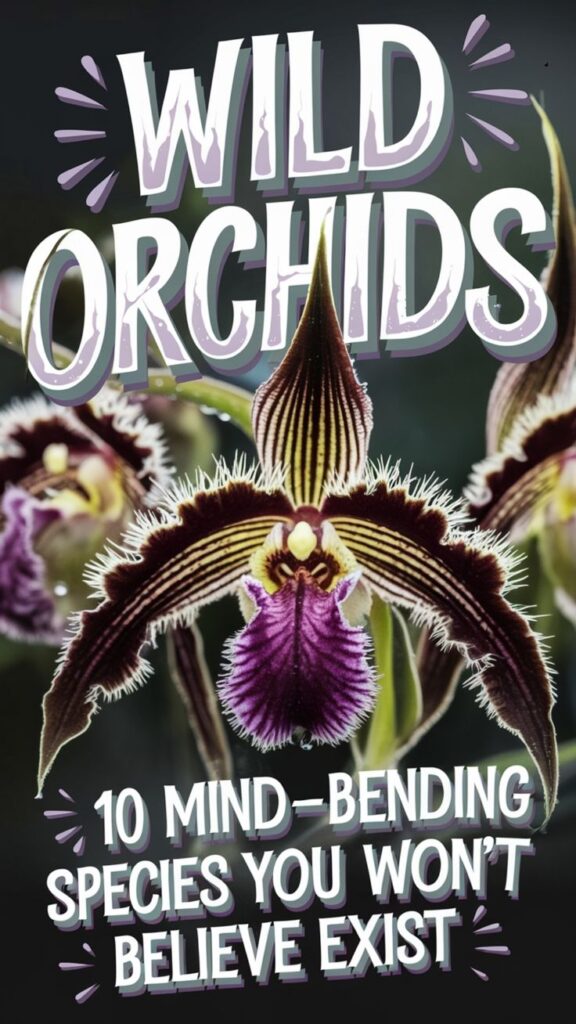
Contents
- 1 The Ghost Orchid: A Disappearing Wonder
- 2 Nature’s Masquerade: The Monkey Face Orchid
- 3 Western Underground Orchids: Hidden Treasures
- 4 The Gold of Kinabalu: World’s Most Expensive Orchid
- 5 Darwin’s Comet Orchid: A Pollination Marvel
- 6 The Tiger Blue Orchid: Asia’s Elusive Beauty
- 7 Conservation Efforts and Future Preservation
The Ghost Orchid: A Disappearing Wonder
The ghost orchid, Dendrophylax lindenii, ranks among the world’s most elusive and endangered flowers. You’ll find these ethereal blooms dangling from tree bark in Florida’s swamps, where they appear to float in mid-air due to their nearly invisible roots. They’re exceptionally rare, with fewer than 2,000 plants remaining in the wild.
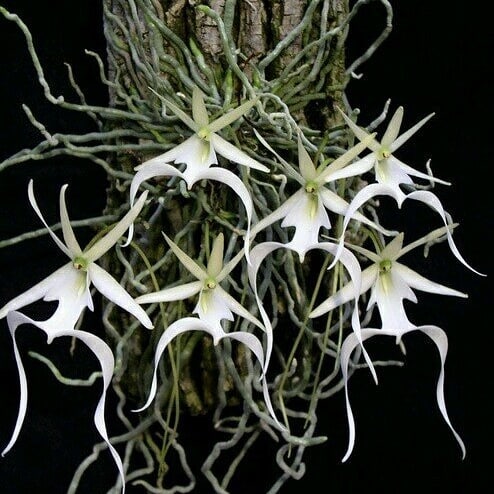
If you’re lucky enough to spot one, you’ll notice its distinctive white petals stretching up to 5 inches across, resembling a frog in mid-leap. The ghost orchid blooms between June and August, producing a subtle vanilla fragrance that attracts giant sphinx moths, their sole pollinators.
Nature’s Masquerade: The Monkey Face Orchid
Moving from Florida’s ghostly blooms, we’ll find another remarkable orchid species in South America’s cloud forests. The Dracula simia, commonly known as the Monkey Face Orchid, grows at elevations between 3,000 and 6,000 feet in Ecuador and Peru’s misty mountains.
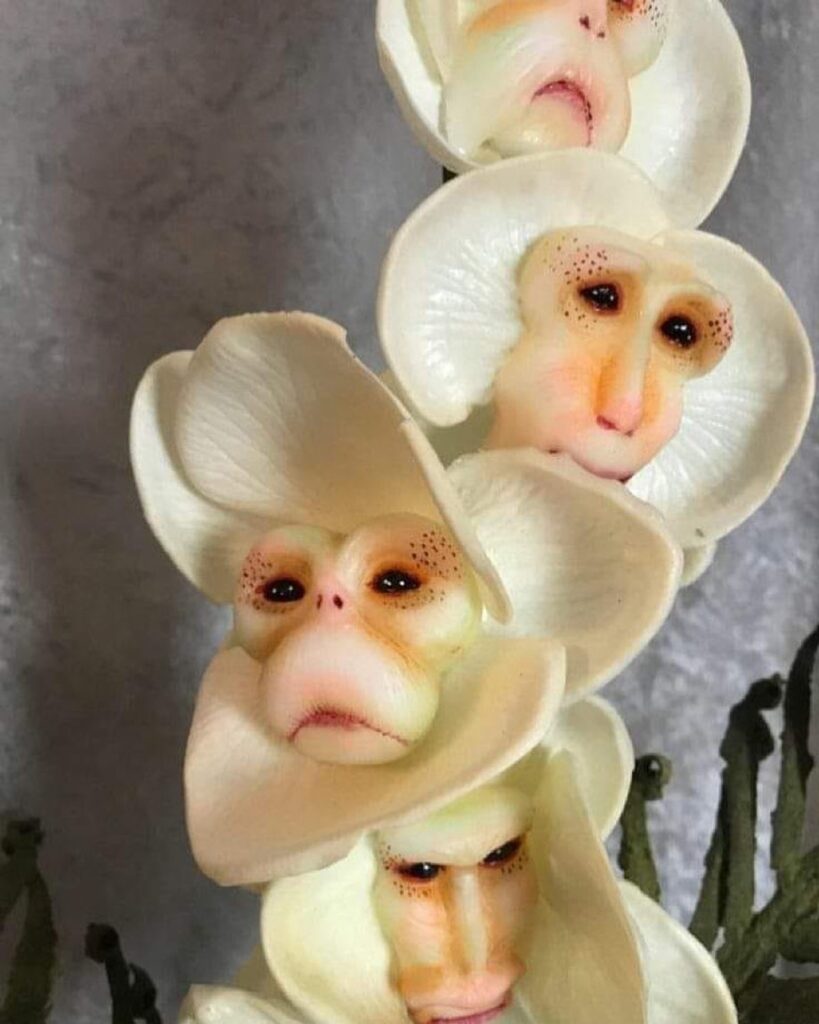
You’ll immediately notice why it’s earned its playful name – the center of each bloom displays an uncanny resemblance to a monkey’s face, complete with fuzzy dark eyes and a furry brown snout. The orchid’s arrangement of deep burgundy petals frames this primate-like feature perfectly.
These diminutive wonders measure just 2 inches across and, surprisingly, emit a subtle scent of ripe oranges.
Hidden beneath Australia’s sandy soils, Western Underground Orchids (Rhizanthella gardneri) grow in complete darkness, never emerging above ground during their entire lifecycle. You’ll find these rare plants thriving at depths of 10-15 centimeters, where they form symbiotic relationships with both fungal networks and broom honeymyrtle shrubs.
These orchids prefer well-draining, sandy loam soils in Western Australia’s wheatbelt region, where temperatures remain relatively stable year-round. Unlike typical orchids, they don’t need sunlight to photosynthesize – instead, they obtain nutrients through their fungal partners, a process you’d recognize as mycoheterotrophy.
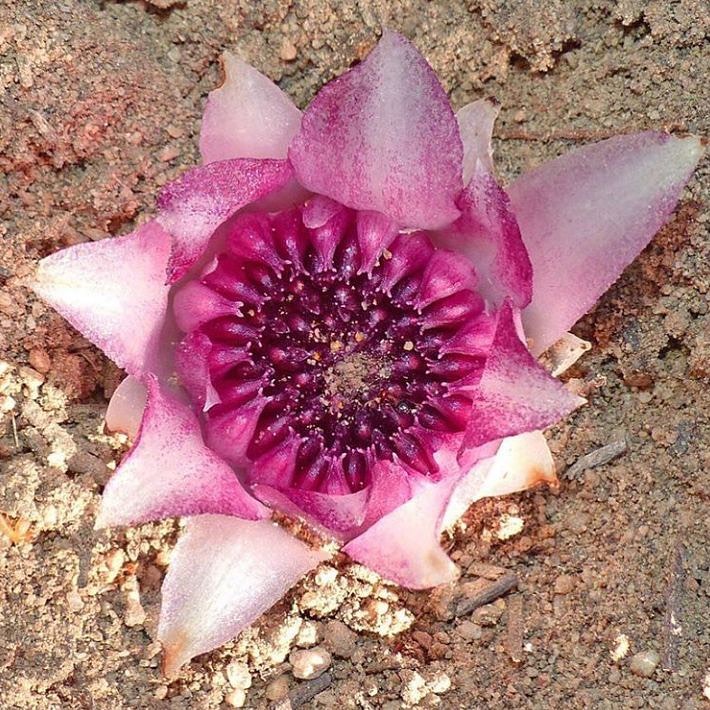
The remarkable discovery of Western Underground Orchids occurred in 1928 when farmer John Trott stumbled upon the first specimens while plowing his field near Corrigin, Western Australia.
If you’re hoping to spot these elusive plants today, you’ll find they’re critically endangered, with fewer than 50 mature specimens remaining in the wild. Conservation efforts, led by Australia’s Department of Biodiversity, now protect their known habitats through fenced enclosures and controlled burns.
You can support preservation efforts by joining local conservation groups that monitor these sites, though you won’t see the orchids themselves – they grow completely underground, flowering just once every 3-4 years.
Unique Flowering Patterns
Deep beneath Western Australia’s soil, remarkable flowering patterns emerge when underground orchids sense the right environmental conditions. You’ll find these elusive plants blooming in complete darkness, producing flowers that never see sunlight.
Unlike typical orchids, the Western Underground Orchid‘s flowering cycle depends on soil moisture rather than seasonal light changes. When you’re tracking their patterns, you’ll notice they bloom between May and August, with each flower lasting just 2-3 weeks.
The plant’s specialized pollination system relies on fungal networks and small insects that travel through soil tunnels, ensuring reproduction even though the flowers remain buried 10-30 centimeters below the surface.
The Gold of Kinabalu: World’s Most Expensive Orchid
Growing exclusively on Mount Kinabalu in Borneo, Rothschild’s slipper orchid (Paphiopedilum rothschildianum) stands as nature’s most valuable orchid species, with mature specimens fetching up to $25,000 per plant.
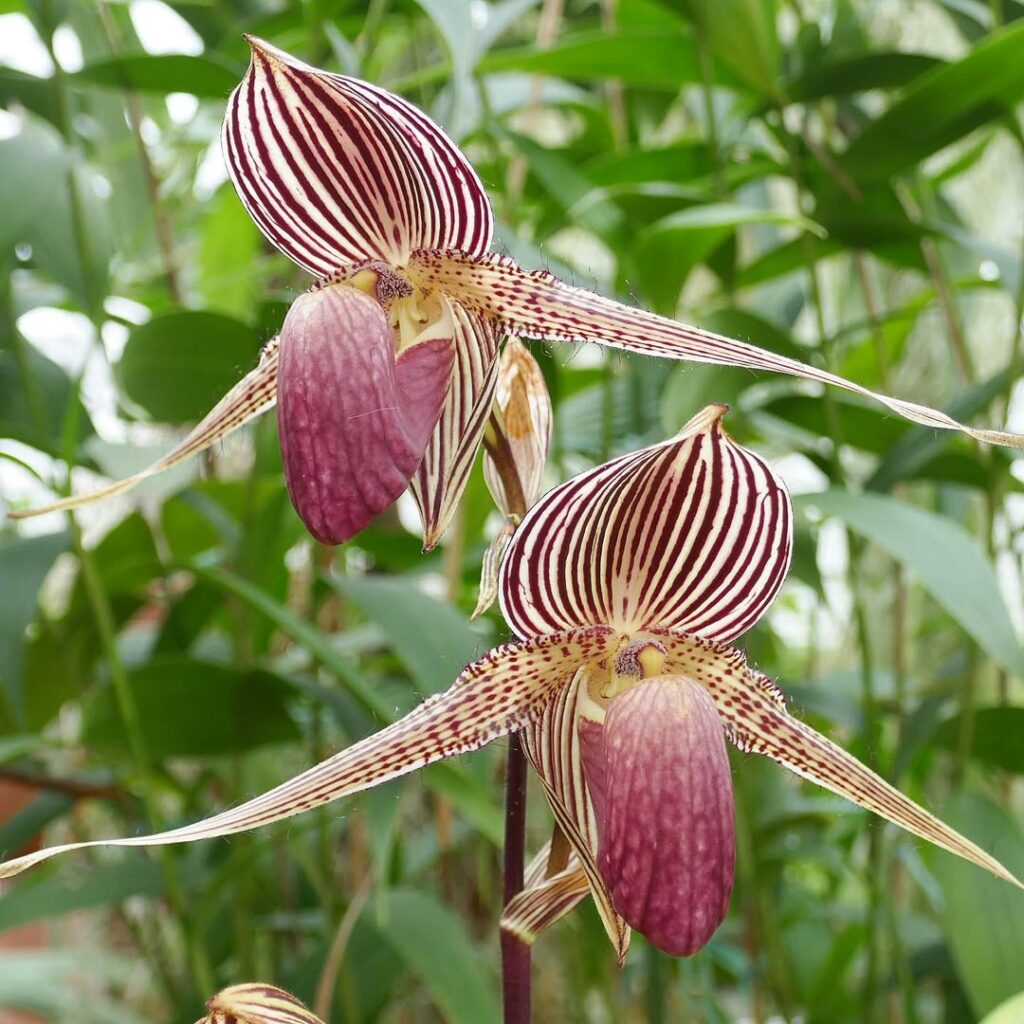
You’ll find this orchid blooming between April and May, producing up to six flowers per stem. Its distinctive petals, spanning 12 inches across, showcase bold stripes in deep burgundy and cream colors.
If you’re hoping to spot one in the wild, you’ll need to climb to elevations between 1,970-3,940 feet. The plant’s rarity stems from its slow growth rate, taking 15 years to reach flowering maturity, and its extremely limited natural habitat.
Darwin’s Comet Orchid: A Pollination Marvel
When Charles Darwin first examined Madagascar’s Comet Orchid in 1862, he made a bold prediction about its unknown pollinator based on the flower’s extraordinarily long nectar tube. You’ll find it fascinating that Darwin proposed a moth species with an impossibly long proboscis, which many naturalists initially dismissed as far-fetched. The mystery wasn’t solved until 1903, when scientists discovered the Giant Hawk Moth, exactly as Darwin had predicted, with a foot-long proboscis perfectly evolved to reach the orchid’s nectar.
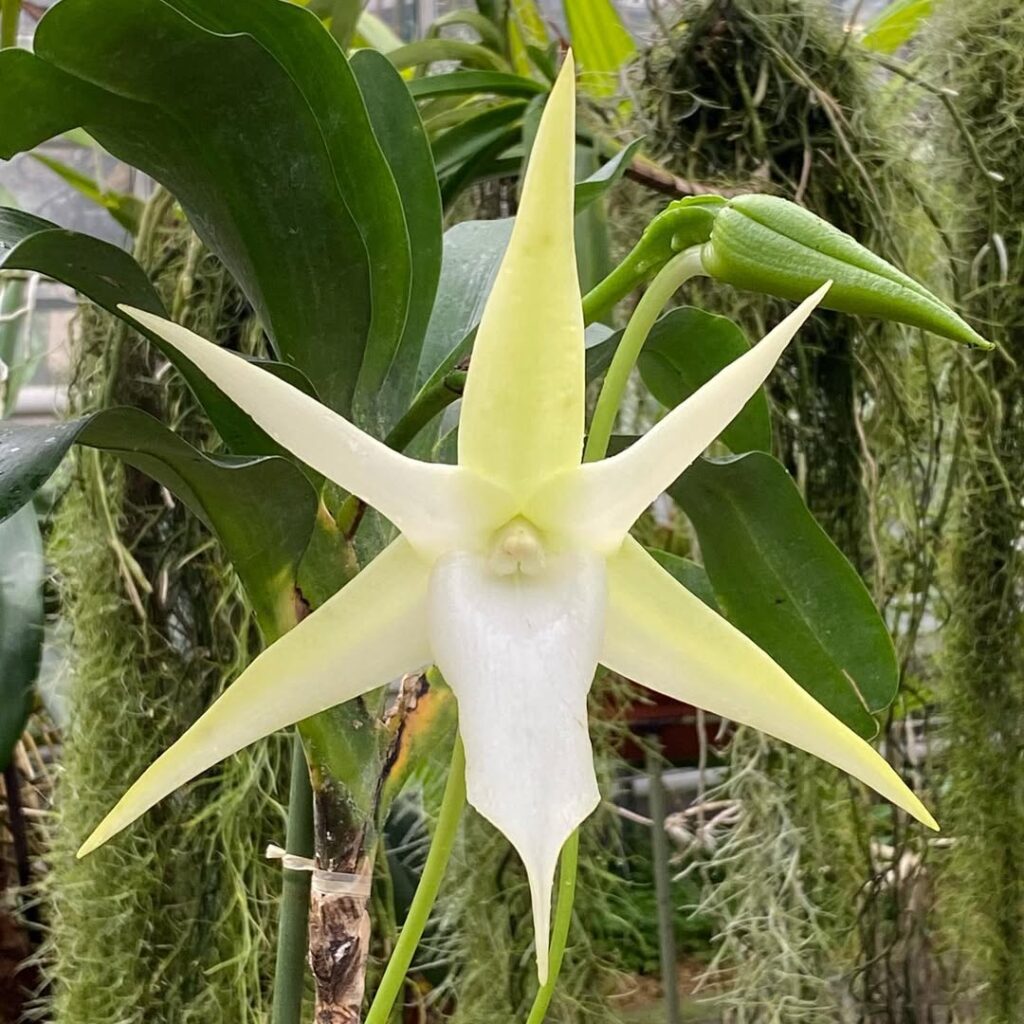
Charles Darwin’s most remarkable orchid prediction emerged from his study of Madagascar’s Angraecum sesquipedale, now known as Darwin’s Comet Orchid. When you examine this orchid’s foot-long nectar spur, you’ll understand why Darwin boldly predicted the existence of a moth with an incredibly long proboscis.
In 1862, Darwin suggested that a then-undiscovered moth species must exist to pollinate this unique flower. You wouldn’t believe it, but it took scientists 41 years to prove him right. In 1903, they discovered Xanthopan morganii praedicta, a hawk moth with a 12-inch proboscis that perfectly matches the orchid’s nectar tube.
The Tiger Blue Orchid: Asia’s Elusive Beauty
Deep within Southeast Asia’s misty mountain forests, you’ll find one of nature’s most enchanting orchids – the Tiger Blue Orchid (Vanda coerulea). This rare species grows at elevations between 3,000 and 5,000 feet, displaying vibrant blue-violet petals with distinctive tiger-like stripes.
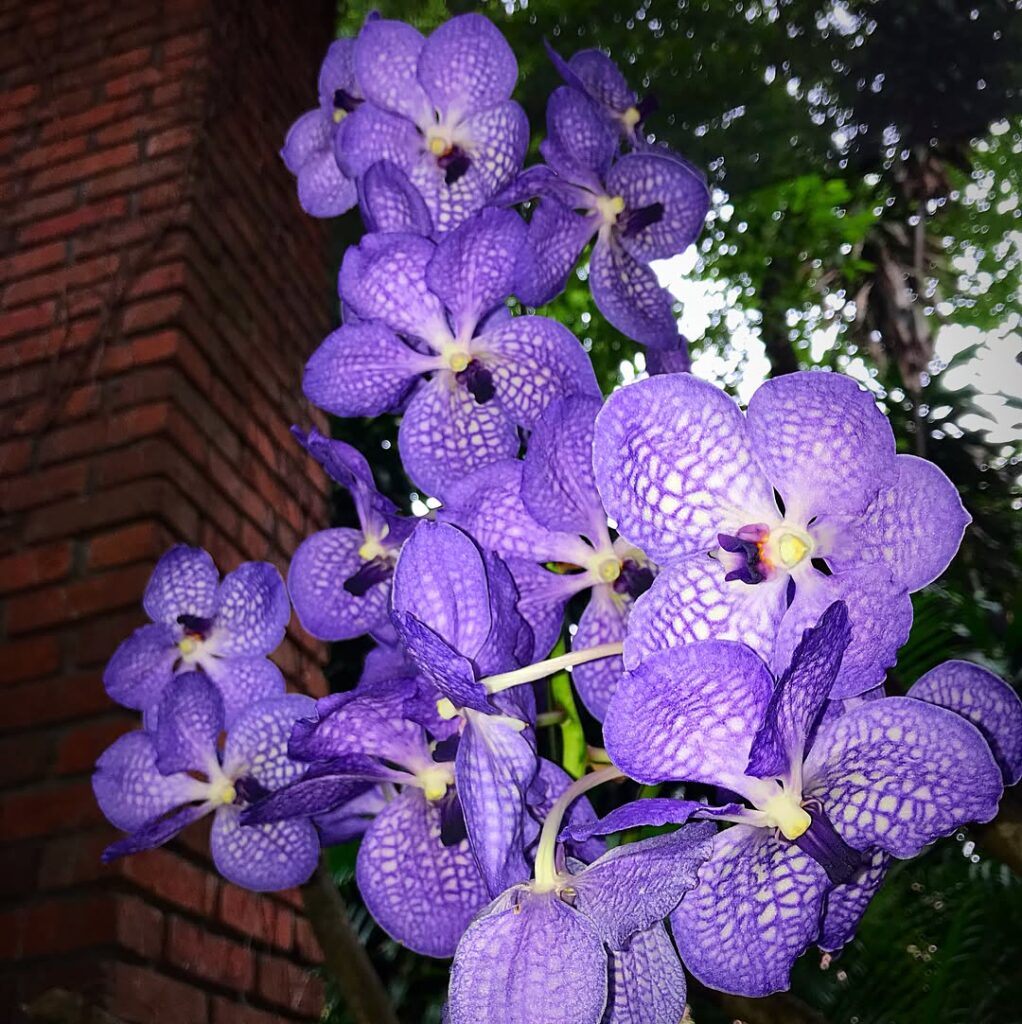
You’ll notice its sturdy stems can reach heights of 6 feet, producing up to 20 flowers per spike. Each bloom measures 4-5 inches across and maintains its color for 6-8 weeks. While most orchids prefer shade, the Tiger Blue thrives in bright, filtered sunlight and requires temperatures between 60-85°F to flourish.
Conservation Efforts and Future Preservation
Preserving spectacular species like the Tiger Blue Orchid has become increasingly challenging in recent decades. You’ll find conservation groups establishing seed banks, tissue culture labs, and protected growing zones to safeguard these precious plants for future generations.
If you’re interested in supporting orchid conservation, you can join local botanical societies that maintain rescue programs. These organizations work to protect natural habitats and collect endangered specimens before they’re lost forever.
Many facilities now use advanced propagation techniques, where you’ll see one plant transformed into hundreds of clones. Through these methods, conservationists have successfully preserved 76% of known rare orchid species since 2010.
